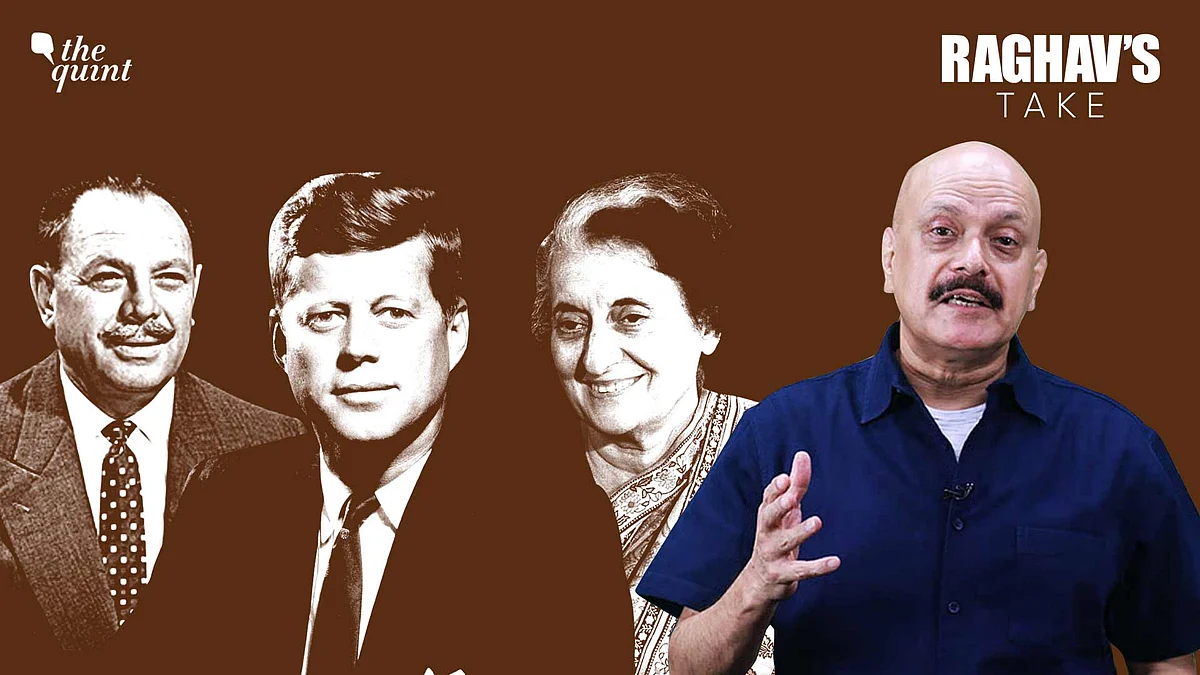US-India-Pak: Tired Nehru, Wily Ayub, Distracted Kennedy, Angry Indira
Despite a vocal pro-India contingent in the White House, Pakistan overshadowed India during the Kennedy regime.

advertisement
Foreword: For over two decades, America and India have been unflinching strategic allies, while Pakistan had become an outcaste after Osama Bin Laden was found hiding in Abbottabad in 2011. But with President Donald Trump’s unpredictable U-turns, is America swinging back towards Pakistan? Or simply nettling India? In this mini-series, we do a fascinating replay of history since the 1940s – how the personalities of successive American presidents have had an outsized impact on the quicksilver, vacillating America-India-Pakistan equation.
In Part 1, we deciphered the early years after Independence, under Presidents Truman and Eisenhower. Here, in Part 2, we look at the uneven terrain under Presidents Kennedy and Lyndon Johnson.
Despite an increasingly vocal pro-India contingent in the White House, Pakistan overshadowed India during the Kennedy administration, too. Partly that was the result of personality politics; General Ayub Khan had installed himself as the President of Pakistan, and won over America with his passion, charm, and forthrightness.
Soon after, the Pakistani President himself paid a visit to Washington, where he shrewdly convinced Kennedy of his country’s loyalty to the US and pushed for the Pentagon’s help in modernising Pakistan’s military.
By contrast, Nehru came off as a tired, ailing statesman; Kennedy described his 1961 visit as ‘a disaster . . . the worst head-of-state visit I have had.’ Nehru certainly didn’t win any friends in America by ordering the forceful seizure of the colony of Goa from the Portuguese in 1961, or by approving India’s purchase of MiG fighter jets from the Soviets. Nehru had aged, but India’s foreign policy was still adolescent.
The China War Brings a Temporary Shift
India’s 1962 border war with China provided the US with an unexpected opportunity to help India without irritating Pakistan. After all, Ayub had repeatedly cited repelling communism as the main justification for Pakistan’s acquisition of US arms; why would he object to India getting them for the same reason?
The US sent equipment anyway, though it was careful to avoid shipping heavier material that could be used against Pakistan. By November, with the Chinese dominating, a panicked Nehru put Washington in an even tougher spot by asking Kennedy to supply American air support for India’s forces, notwithstanding his sacred nonalignment policy. Fortunately, China declared a ceasefire and retreated before the Kennedy administration could respond, saving Washington from having to make that decision.
Still, the Sino-Indian war inspired a new round of US military aid to India, though never as much as Delhi hoped for.
Washington’s Growing Doubts
At the same time, the US saw the first hints of Pakistani duplicity. For all Ayub’s talk about combating communism, he’d quietly been pursuing closer ties to China.
The previous year, Pakistan had reversed course to support China’s admission to the UN. Even during the Sino–Indian war, it was negotiating with China over a demarcation agreement for their shared border, which they would sign in 1963. Maybe Eisenhower had been right when he called the US arms deal with Pakistan a ‘terrible error’.
It certainly seemed that way when India and Pakistan went to war in 1965 over Kashmir. Despite their assurances to the contrary, the Pakistanis used US weapons against the Indians, justifying their action as ‘self-defence’. Delhi was furious.
It wasn’t until 1967 that Washington revisited its military aid policy on the subcontinent, agreeing to send Pakistan replacement parts for existing arms but no new weapons. Neither India nor Pakistan was happy with that shift; India resented any additional help to the Pakistanis, and Pakistan considered the help insufficient.
Seeing an opening, Moscow rushed to add Pakistan to its list of weapons customers on the subcontinent, a gesture Islamabad rewarded by unceremoniously closing down the US military base in Peshawar. Pakistan’s less-than-gracious behaviour left a bad taste in Washington’s mouth. But it was nothing worth addressing directly.
Johnson’s ‘Ship to Mouth’ Policy
Relations with India weren’t much better. When Delhi came asking Washington in 1965 to shore up its wheat aid programme, known as PL-480, President Johnson said no. He had abruptly halted the automatic renewal of all US aid schemes for India and Pakistan, insisting his government take ‘a hard new look… before we spend a lot more money.’
Johnson sensed aid fatigue in the Congress, and he saw no evidence that India was doing anything to address its chronic food shortages. In 1954, the year PL-480 began, India imported 1 million tons of grain; ten years later, imports had risen to 5.5 million tons, a jump only partly attributable to population growth.
The following year, with the drought persisting, Johnson went even further, implementing what came to be known as the ‘ship to mouth’ policy—essentially keeping the supply line so short there was no cushion against famine.
Indira Gandhi's Costly Criticism
For many Indians, this was the final indignity that drove a permanent wedge between the US and India—one that still troubles the relationship half a century later.
Some observers believe Johnson’s draconian food aid policy was in retaliation for that, while others maintain he was legitimately worried about America’s own grain supply, also ravaged by drought that year.
But Indira Gandhi felt humiliated by the conditional food aid. She became more committed than ever to charting an independent path for India, repeatedly refusing to sign the 1968 Nuclear Non-Proliferation Treaty (NPT).
India already had a robust civil nuclear programme and had vowed not to develop nuclear weapons. But despite prodding from both the US and the Soviet Union, Gandhi saw no reason to sign the NPT, which she deemed unfair to India because it required concessions only from countries that hadn’t yet developed nuclear weapons.
Note: In Part 3 of this mini-series, we shall dive into the acerbic and volatile face-off between President Richard Nixon and Prime Minister Indira Gandhi.